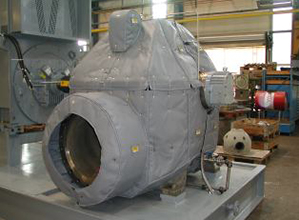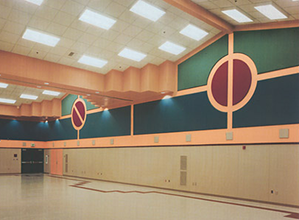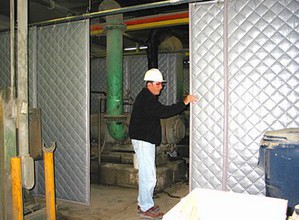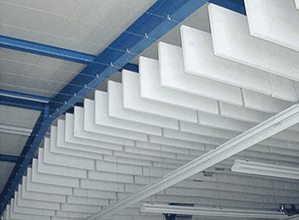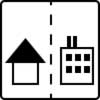Acoustic Test Rooms: Features and Benefits
You have a product that produces sound, such as a car, appliance, or musical instrument. You need to make sure that the product is only emitting the sounds it is supposed to. You need to test the acoustics of that product in a safe, controlled environment. This testing process allows you to accurately measure the decibels (dBA) and related statistics. Any you need to do all of this without compromising the quality of the product in any way.
Do any of the above apply to you? If so, you need an acoustic test room.
What is an acoustic test room?
As the name suggests, an acoustic test room is designed to test sounds. Specifically, it measures the volume and pressure of sound, identifies where that sound comes from, isolates the sound within the room, and prevents unwanted, external noise from getting inside the room. Acoustic test rooms are also known as “quiet rooms,” “sound rooms,” or “acoustic testing chambers.”
Types of Acoustic Test Rooms
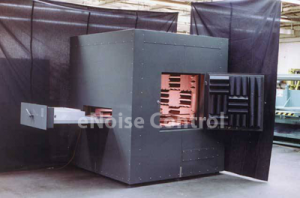 The features of an acoustic testing chamber depend on whether it is a full anechoic chamber, a hemi-anechoic chamber, or a pass/fail chamber.
The features of an acoustic testing chamber depend on whether it is a full anechoic chamber, a hemi-anechoic chamber, or a pass/fail chamber.
- Full Anechoic Chamber. Full anechoic chambers receive 99 to 100% of acoustical treatment. The walls and ceilings are lined with anechoic material, while the floors are designed to withstand heavy test specimens. These types of chambers are often used for loudspeakers, microphones, computer equipment, and similar products.
- Hemi-Anechoic Chamber. Compared to full anechoic chambers, hemi-anechoic chambers receive less acoustical treatment. The walls and ceilings may be treated, but not the floors. Hemi-anechoic chambers are often used to test equipment that normally operate on sound reflective surfaces, such as floors and roads. Examples of products tested in these chambers include automobiles, appliance like washing machines and refrigerators, and construction equipment.
- Pass/Fail Chamber. When testing the acoustic quality of smaller equipment, such as mobile phones, pass/fail product service chambers are used. Pass/fail chambers are not treated to the same extent as full and hemi-anechoic chambers. However, they are still useful for running tests that don’t require a significant reduction in the surrounding sounds.
Keep in mind that these chambers are not necessarily created equal. Some “full” anechoic chambers, for example, may be more equipped than others. That is why it is important to compare the same type of chamber from different manufacturers to obtain the best sound room for your purposes.
Features of Acoustic Test Rooms
Apart from the general features mentioned above, a quiet room may have any of the features below.
- Isolated floors
- Single/Double sound doors
- Ventilation
- Electrical connections
- Lighting
- Control supports
- CCTV system
- Fire protection
Other features may be suggested by the manufacturer based on the specifics of your project.
Benefits of Acoustic Test Rooms
- Testing for factory defaults before a product is finalized. If an air conditioner lets our a rattle rather than a hum, for example, it can mean several things. These defects can be identified and remedied before a product is made commercially available.
- Isolating the source of sound more easily. Under normal circumstances, sound testing is difficult because you have to filter out surrounding sounds to zero in on the problem sound. But inside an acoustic test room, only the problem sound can be heard, quantified, and evaluated. This ensures that conclusions are accurate and reliable.
- Keeping the testers safe. Acoustic test rooms are equipped such that no matter the volume of the sound being tested, the personnel do not have to worry about damage to their hearing. Also, some acoustic test rooms have a built-in fire protection and evacuation facility, making it easier for testers to stay safe when they need to.
- Avoiding legal liability. If neighbors have complained about the noise coming from your facilities and you doubt these complaints, an acoustic test room can settle the dispute. If the factory machines were noisy as claimed, you can take steps to remedy the situation. Otherwise, you can prove that your machinery is not the source of the noise pollution.
eNoise Control acoustic rooms and anechoic chambers are designed to suit your requirements. Our experienced staff can help you know how to choose the best room for your application. Call us today for help with your acoustic test room needs.
